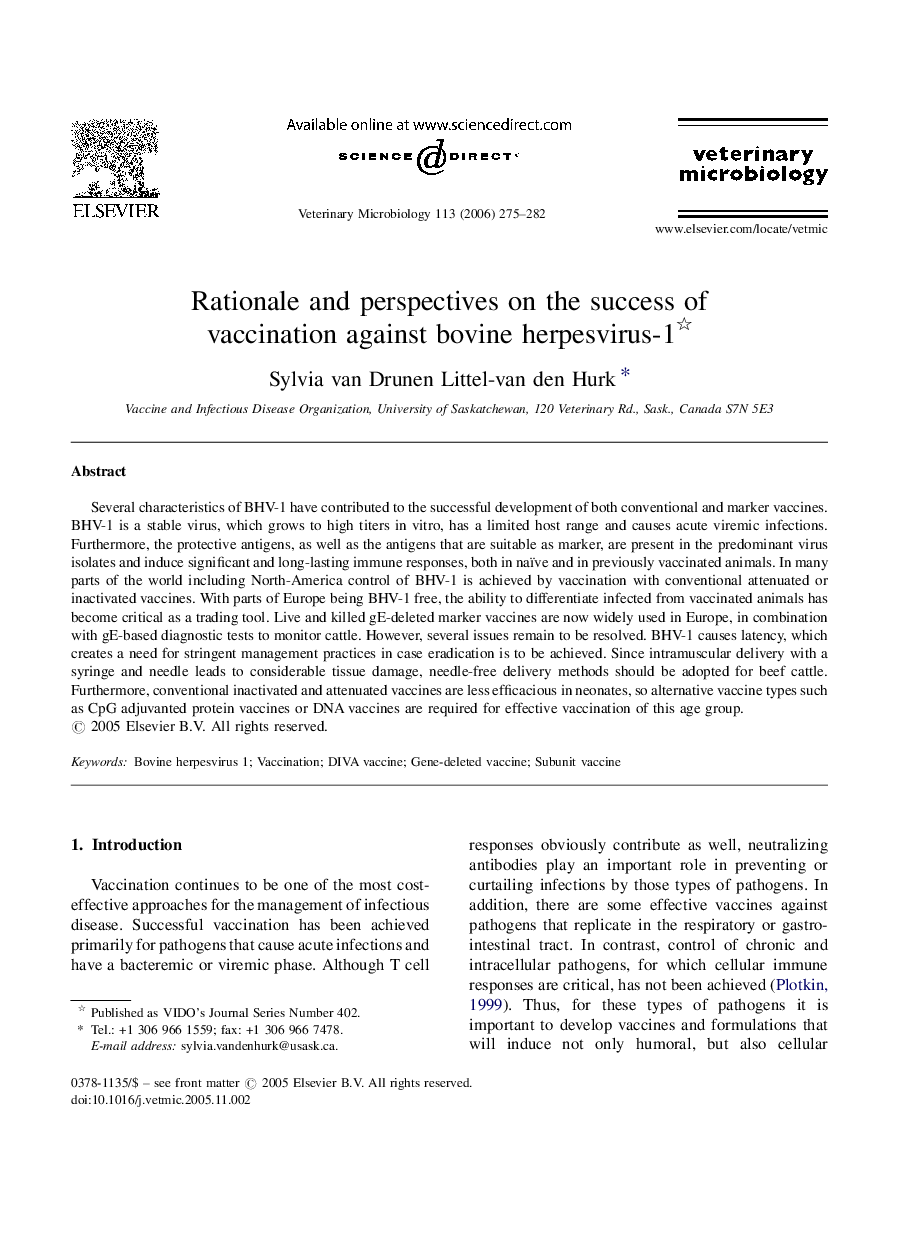| Article ID | Journal | Published Year | Pages | File Type |
|---|---|---|---|---|
| 2469741 | Veterinary Microbiology | 2006 | 8 Pages |
Several characteristics of BHV-1 have contributed to the successful development of both conventional and marker vaccines. BHV-1 is a stable virus, which grows to high titers in vitro, has a limited host range and causes acute viremic infections. Furthermore, the protective antigens, as well as the antigens that are suitable as marker, are present in the predominant virus isolates and induce significant and long-lasting immune responses, both in naïve and in previously vaccinated animals. In many parts of the world including North-America control of BHV-1 is achieved by vaccination with conventional attenuated or inactivated vaccines. With parts of Europe being BHV-1 free, the ability to differentiate infected from vaccinated animals has become critical as a trading tool. Live and killed gE-deleted marker vaccines are now widely used in Europe, in combination with gE-based diagnostic tests to monitor cattle. However, several issues remain to be resolved. BHV-1 causes latency, which creates a need for stringent management practices in case eradication is to be achieved. Since intramuscular delivery with a syringe and needle leads to considerable tissue damage, needle-free delivery methods should be adopted for beef cattle. Furthermore, conventional inactivated and attenuated vaccines are less efficacious in neonates, so alternative vaccine types such as CpG adjuvanted protein vaccines or DNA vaccines are required for effective vaccination of this age group.
